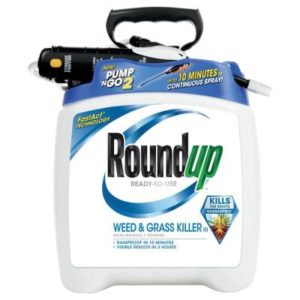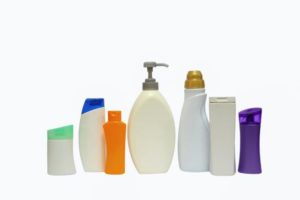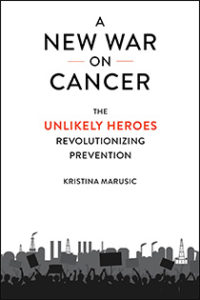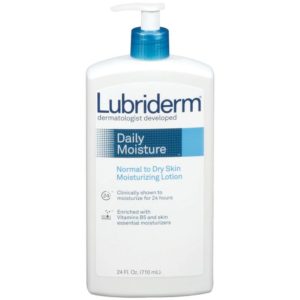 People don't realize the incredibly large amounts of pesticides applied to crops and soil in the US each year. Hundreds of millions of pounds! Which is the reason pesticides are found in our air, rain, water, soil, our foods, and in our bodies.
People don't realize the incredibly large amounts of pesticides applied to crops and soil in the US each year. Hundreds of millions of pounds! Which is the reason pesticides are found in our air, rain, water, soil, our foods, and in our bodies.
One of the pesticides that scientists are getting increasingly concerned with is the weed-killer glyphosate. It is the most used herbicide (weed-killer) in the world! It is found in Roundup, in non-organic crops, and even in genetically modified crops that are glyphosate resistant. Especially used on corn and soybeans, but also in a variety of crops (e.g., wheat, oats, cranberries, grapes, apples, beans).
The following story lays out the great amounts used in some states, especially in the midwest and southern states. Overall, an average of almost 130 pounds of glyphosate were sprayed per square mile in US counties each year.
But some counties had incredibly high amounts, such as Nueces County, Texas which has the highest use of glyphosate: more than 1,100 pounds sprayed per square mile. Iowa and Illinois (corn and soybean crops) accounted for 15% of national usage. The least was in northeastern (e.g., Massachusetts) and southwestern states (e.g., Nevada).
Evidence for health harms are increasing each year, such as an increased risk of cancer (e.g., non-Hodgkin lymphoma), premature births, endocrine disruption, and even disruptions of the gut microbiome (it kills beneficial microbes in the gut). The percentage of people with glyphosate detected in their urine, and the amount (concentration) has been rising over time. It can now be detected in almost all of us.
By the way, the EPA has raised "allowable limits" of glyphosate in foods over the years - when the pesticide industry asked for it. The US limits are much higher than those allowed in Europe - twice the levels! (Once again, in the US the EPA favors industry, not the people it's supposed to be protecting.)
This article is from October 2022, but it highlights the incredibly high amounts of glyphosate applied in the US (see the good interactive map). Excerpts from NBC News: A potentially cancer-causing chemical is sprayed on much of America’s farmland. Here is where it is used the most.
Every day, farms across the country use a potentially cancer-causing chemical that is in the world’s most common weedkillers. And data shows that it’s most used in the Midwest and parts of the South. ...continue reading "Enormous Amounts of One Pesticide Used In the US"
 There may be new treatments on the horizon for the most aggressive and deadly brain cancer known as glioblastoma. The median survival is less than one year, so this is very exciting news.
There may be new treatments on the horizon for the most aggressive and deadly brain cancer known as glioblastoma. The median survival is less than one year, so this is very exciting news.
 Most Americans eat highly processed or ultra-processed foods every single day, with most of their daily calories from them! There are all sorts of health risks from these foods, with a recent study finding an overall increased risk of cancer, as well as prostate and breast cancer.
Most Americans eat highly processed or ultra-processed foods every single day, with most of their daily calories from them! There are all sorts of health risks from these foods, with a recent study finding an overall increased risk of cancer, as well as prostate and breast cancer. A recent
A recent  People don't realize the incredibly large amounts of pesticides applied to crops and soil in the US each year.
People don't realize the incredibly large amounts of pesticides applied to crops and soil in the US each year.  It has long been known that dogs get cancers, from similar chemical exposures as humans (e.g., lymphoma from exposure to weed-killer 2,4-D on lawns). A
It has long been known that dogs get cancers, from similar chemical exposures as humans (e.g., lymphoma from exposure to weed-killer 2,4-D on lawns). A  A recent large Swedish
A recent large Swedish  People worry about breast cancer and whether exposure to chemicals "in the environment" can lead to breast cancer. According to many studies the answer is: YES, absolutely - and this is why they are called carcinogens (a substance capable of causing cancer). What are the chemicals?
People worry about breast cancer and whether exposure to chemicals "in the environment" can lead to breast cancer. According to many studies the answer is: YES, absolutely - and this is why they are called carcinogens (a substance capable of causing cancer). What are the chemicals? Also, avoid using pesticides as much as possible, and instead use least toxic Integrated Pest Management (IPM) or organic methods, both inside the home and outside.
Also, avoid using pesticides as much as possible, and instead use least toxic Integrated Pest Management (IPM) or organic methods, both inside the home and outside. There is another very good book to read about environmental causes of cancer. It's called A New War On Cancer: The Unlikely Heroes Revolutionizing Prevention by Kristina Marusic. Published by Island Press in 2023.
There is another very good book to read about environmental causes of cancer. It's called A New War On Cancer: The Unlikely Heroes Revolutionizing Prevention by Kristina Marusic. Published by Island Press in 2023. Do you know what chemicals you're exposed to on a daily basis? A recent study found that women with cancers of the breast, uterus, skin (melanoma), or ovaries had significantly higher levels of certain endocrine disrupting chemicals in their bodies than women without any of those cancers.
Do you know what chemicals you're exposed to on a daily basis? A recent study found that women with cancers of the breast, uterus, skin (melanoma), or ovaries had significantly higher levels of certain endocrine disrupting chemicals in their bodies than women without any of those cancers. Once again research finds that drinking sugar sweetened soft drinks or fruit drinks (not juices) is unhealthy. This time
Once again research finds that drinking sugar sweetened soft drinks or fruit drinks (not juices) is unhealthy. This time